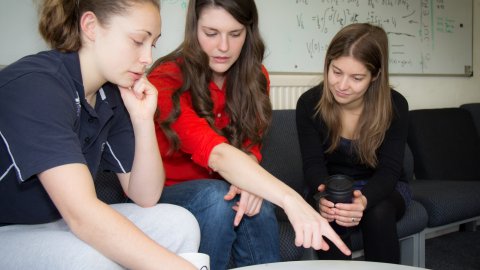Collocation-based hybrid numerical-asymptotic methods for high frequency wave scattering
Abstract
Wave scattering problems arise in numerous applications in acoustics, electromagnetics and linear elasticity. In the boundary element method (BEM) one reformulates the scattering problem as an integral equation on the scatterer boundary, e.g. using Green’s identities, and then seeks an approximate solution of the boundary integral equation (BIE) from some finite-dimensional approximation space. The conventional choice is a space of piecewise polynomials; however, in the “high frequency” regime when the wavelength is small compared to the size of the scatterer, it is computationally expensive to resolve the highly oscillatory wave solution in this way. The hybrid numerical-asymptotic (HNA) approach aims to reduce the computational cost by enriching the BEM approximation space with oscillatory functions, carefully chosen to capture the high frequency asymptotic solution behaviour. To date, the HNA methodology has been implemented almost exclusively in a Galerkin variational framework. This has many attractive features, not least the possibility of proving rigorous convergence results, but has the disadvantage of requiring numerical evaluation of high dimensional oscillatory integrals. In this talk I will present the results of some investigations carried out with my MSc student Emile Parolin into collocation-based implementations, which involve lower-dimensional integrals, but appear harder to analyse in terms of convergence and stability.


